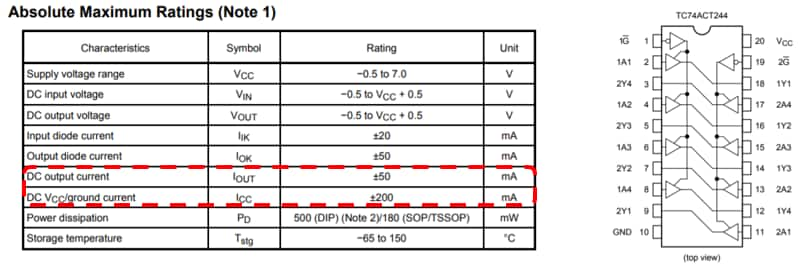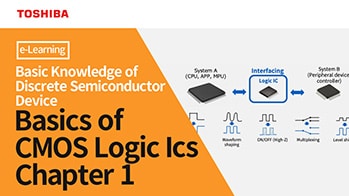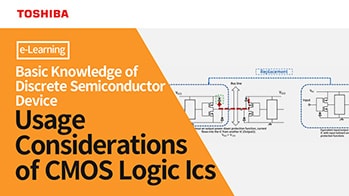- General Top
- SEMICONDUCTOR
- STORAGE
- COMPANY
-
My ToshibaSemicon
- Semiconductor Top
-
ApplicationsAutomotive
Body Electronics
xEV
In-Vehicle Infotainment
Advanced Driver-Assistance Systems (ADAS)
Chassis
IndustrialInfrastructure
BEMS/HEMS
Factory Automation
Commercial Equipment
Consumer/PersonalIoT Equipment
Healthcare
Wearable Device
Mobile
Computer Peripherals
-
ProductsAutomotive Devices
Discrete Semiconductor
Diodes
Transistors
Logic ICs
Analog Devices
Digital Devices
Wireless Devices
※
: Products list (parametric search)
Power Semiconductors※
: Products list (parametric search)
Isolators/Solid State RelaysPhotocouplers
Digital Isolators
Solid State Relays
Fiber Optic Transmitting Modules
※
: Products list (parametric search)
MOSFETsIGBTs/IEGTsBipolar Transistors※
: Products list (parametric search)
Diodes※
: Products list (parametric search)
MicrocontrollersMotor Driver ICsIntelligent Power ICs※
: Products list (parametric search)
Power Management ICsLinear ICs※
: Products list (parametric search)
General Purpose Logic ICsLinear Image SensorsOther Product ICsOther Product ICs
※
: Products list (parametric search)
-
Design & Development
-
Knowledge
- Where To Buy
- Part Number & Keyword Search
- Cross Reference Search
- Parametric Search
- Stock Check & Purchase
This webpage doesn't work with Internet Explorer. Please use the latest version of Google Chrome, Microsoft Edge, Mozilla Firefox or Safari.
require 3 characters or more. Search for multiple part numbers fromhere.
The information presented in this cross reference is based on TOSHIBA's selection criteria and should be treated as a suggestion only. Please carefully review the latest versions of all relevant information on the TOSHIBA products, including without limitation data sheets and validate all operating parameters of the TOSHIBA products to ensure that the suggested TOSHIBA products are truly compatible with your design and application.Please note that this cross reference is based on TOSHIBA's estimate of compatibility with other manufacturers' products, based on other manufacturers' published data, at the time the data was collected.TOSHIBA is not responsible for any incorrect or incomplete information. Information is subject to change at any time without notice.
require 3 characters or more.
How many amperes is the output current of a general-purpose logic IC able to drive?
The current value that can be driven by the output of the general-purpose logic IC is explained based on the value described in the data sheet.
Related items are DC output current IOUT and DC Vcc current/ground current ICC/IGND.
IOUT is the maximum current that can be driven by one output, and ICC/IGND is the maximum current that can be driven by the entire IC.
Note that the following formula does not always hold when the number of outputs is n.
ICC/IGND / n = IOUT
Example: TC74ACT244FT
Table-1 is a copy of the Absolute Maximum Ratings table from the TC74ACT244FT datasheet. The TC74ACT244FT provides an IOUT of 50 mA and an ICC of 200 mA. When all the eight outputs provide an equal amount of current, the amount of current that each output can drive is calculated to be:
200 mA / 8 = 25 mA
Therefore, not all the outputs can drive an output current of 50 mA as specified as IOUT simultaneously.

Comparing absolute maximum ratings (Output Current IOUT and Power Supply /GND Current ICC/IGND) of Main Products in Each Series
Typical product used in the table-2
General-purpose logic IC :74xx244
One-gate logic (L-MOS:TC7S00, TC7PZ34, other series is TC7xx125)
The values in table-2 are values of representative products and show the tendency of each series. (This may change depending on the function you select.) Use this as a guide for designing.
Output current IOUT and DC Vcc current/ground current ICC/IGND are not specified for the Standard series.
Items |
Symbol (Unit) |
Series |
|||||||||||||
|---|---|---|---|---|---|---|---|---|---|---|---|---|---|---|---|
Standard |
High Speed |
Advanced |
Very High Speed |
Low Voltage |
Very Low Voltage |
||||||||||
CMOS Logic ICs |
One-Gate Logic |
CMOS Logic ICs |
One-Gate Logic |
CMOS Logic ICs |
CMOS Logic ICs |
CMOS Logic ICs |
One-Gate Logic |
CMOS Logic ICs |
One-Gate Logic |
CMOS Logic ICs |
One-Gate Logic |
||||
TC40 |
TC4S |
TC74HC |
TC7S |
TC7W |
TC74AC |
74VHC |
74VHCV |
TC7SH |
74LCX |
TC7SZ |
TC7PZ |
TC74VCX |
7UL1G |
||
7UL2G |
|||||||||||||||
Output current |
IOUT (mA) |
- |
- |
±35 |
±12.5 |
±35 |
±50 |
±25 |
±50 |
±25 |
±50 |
±50 |
±50 |
±50 |
±25 |
| VCC/GND Current |
Icc/IGND (mA) |
- |
- |
±75 |
±25 |
±37.5 |
±200 |
±75 |
±100 |
±50 |
±100 |
±50 |
±100 |
±100 |
±50 |
Note: Any one of the absolute maximum ratings must not be exceeded even instantaneously.
Even when an IC is used at a temperature, current, and voltage within the absolute maximum rated and operating ranges, its reliability could degrade substantially if it is continuously exposed to heavy loads (e.g., high temperature, high current, high voltage, and large temperature changes). Be sure to build reliability into applications, referring to the Toshiba Semiconductor Reliability Handbook (particularly the sections on handling precautions and derating) and information on the reliability of individual devices (e.g., reliability test reports and estimated failure rates).
Related Links
The following documents also contain related information.




